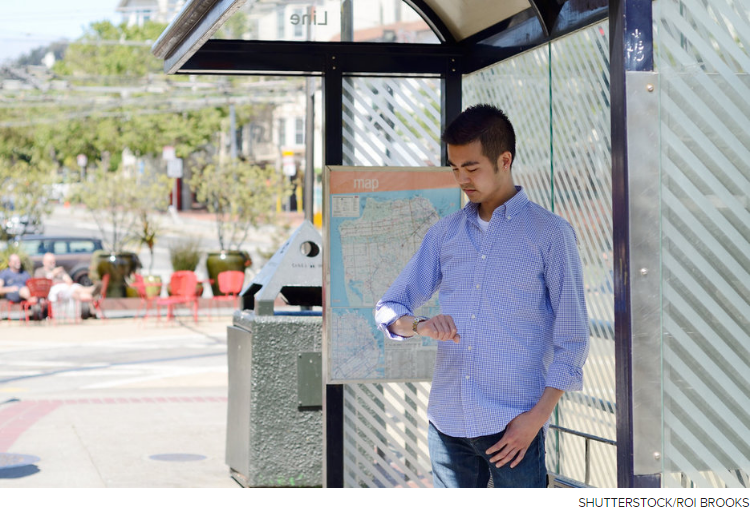
by Innovative Mobility Research | Aug 18, 2017 |
By: Susan Shaheen, 16 August 2017 Generations of ecologists, urban planners, and engineers have undoubtedly been influenced by the events that shaped their lives. Today, we are confronted with an infrastructure and economic challenge of epic proportions. Across the globe, our cities suffer from poor air quality and worsening congestion that strangles our roads and highways; wastes time and diminishes the savings and expendable income of families; and adversely impacts quality of life. In recent years, technological, economic, and environmental forces have quickly given rise to “Smart Cities” – a collective of municipal public and private partnerships leveraging information and communications technology (ICT) to more intelligently and efficiently use resources with the goals of achieving energy and taxpayer savings, improving service delivery and quality of life, and reducing adverse environmental impacts – all supporting innovation, government efficiency, and environmental sustainability. While precise definitions of smart cities may vary, smart cities frequently use ICT to manage an ecosystem of civic resources including: transportation systems, telecommunications, utilities, health and human services, public safety, and other community services. In both Europe and the United States, the transport sector accounts for approximately one quarter of greenhouse gas (GHG) emissions. The European Commission estimates that more than 70% of transportation GHG-related emissions come from roadway users. To read the rest of the article,...

by Innovative Mobility Research | Aug 1, 2017 |
by Dara Kerr and Richard Nieva August 1, 2017 5:00 AM PDT On an average day outside Johannesburg’s downtown train station, a handful of men in all-black military gear are positioned down the block. They wear bulletproof vests, combat boots and wool beanies. A patch on their sleeves reads, “Hi-Risk Security Company, Rapid Response Unit.” As we exited the train station during a trip to South Africa last month, one of the men approached us. “Are you looking for an Uber?” Meet the private security force working for the ride-hailing company in Johannesburg. “On this corner, you are perfectly safe,” the guard told us. We had only his word for it because clashes between Uber and local taxi drivers, known as “metered taxis,” are now a common occurrence in Johannesburg and surrounding cities. To put it bluntly, being an Uber driver here is dangerous. In the last year, the violence has included reports of Uber drivers being beaten as they drop off passengers at busy areas with taxi stands, like train stations. One Uber driver, whose car was set on fire after an attack in June, died two weeks ago from severe burns. To read the rest of the story, visit:...

by Innovative Mobility Research | Jul 19, 2017 |
By Adrienne Roberts Updated July 14, 2017 2:33 p.m. ET America’s car-sharing industry is struggling as some major operators scale back because of weak demand in certain cities, vandalism and competition from ride-hailing services like Uber. Enterprise Holdings Inc.’s Enterprise Rent-A-Car closed its CarShare membership service in six major cities in recent weeks, following similar moves by other providers. To read the full story, visit:...

by Innovative Mobility Research | Oct 27, 2016 |
In recent years, technological and social forces have pushed smartphone applications (apps) from the fringe to the mainstream. Understanding the role of transportation apps in urban mobility is important for policy development and transportation planners. This study evaluates the role and impact of multimodal aggregators from a variety of perspectives, including a literature review; a review of the most innovative, disruptive, and highest-rated transportation apps; interviews with experts in the industry, and a user survey of former multimodal aggregator RideScout users. Between February and April 2016, researchers conducted interviews with experts to gain a stronger understanding about challenges and benefits of data sharing between private companies and public agencies. Key findings from the expert interviews include the critical need to protect user privacy; the potential to use data sharing to address integrated corridor and congestion management as well as various pricing strategies during peak hours; along with the potential benefits for improving coordination between the public and private sectors. In March 2016, researchers surveyed 130 people who had downloaded the RideScout app to evaluate attitudes and perceptions toward mobile apps, travel behavior, and modal shift. The goal was to enhance understanding of how the multimodal apps were impacting the transportation behavior. The survey did found that respondents used multimodal apps in ways that yielded travel that was less energy intensive and more supportive of public transit. Looking to the future, smartphone applications and more specifically multimodal aggregators, may offer the potential for transportation planners and policymakers to enhance their understanding of multimodal travel behavior, share data, enhance collaboration, and identify opportunities for public-private partnerships....

by Innovative Mobility Research | Oct 19, 2016 |
BY BEN MILLER SEPTEMBER 7, 2016 BERKELEY, CALIF. — The future of transportation could very well be unrecognizable compared with today’s system: self-driving pods packed with carpoolers, electric motors, multi-modal journeys, invisible conversations between machines. But that’s the future. And while some of these things are beginning to creep into society, Susan Shaheen isn’t ready to fly the banner of the future just yet. Shaheen, co-director of the Transportation Sustainability Research Center at the University of California, Berkeley, has studied the future of transportation for two decades. Speaking to government and private-sector transportation workers on Sept. 7 at the Bridge SF conference, her message was this: We’re still waiting for the revolution, but there are some very interesting changes in the wind. To read the full article, visit:...






